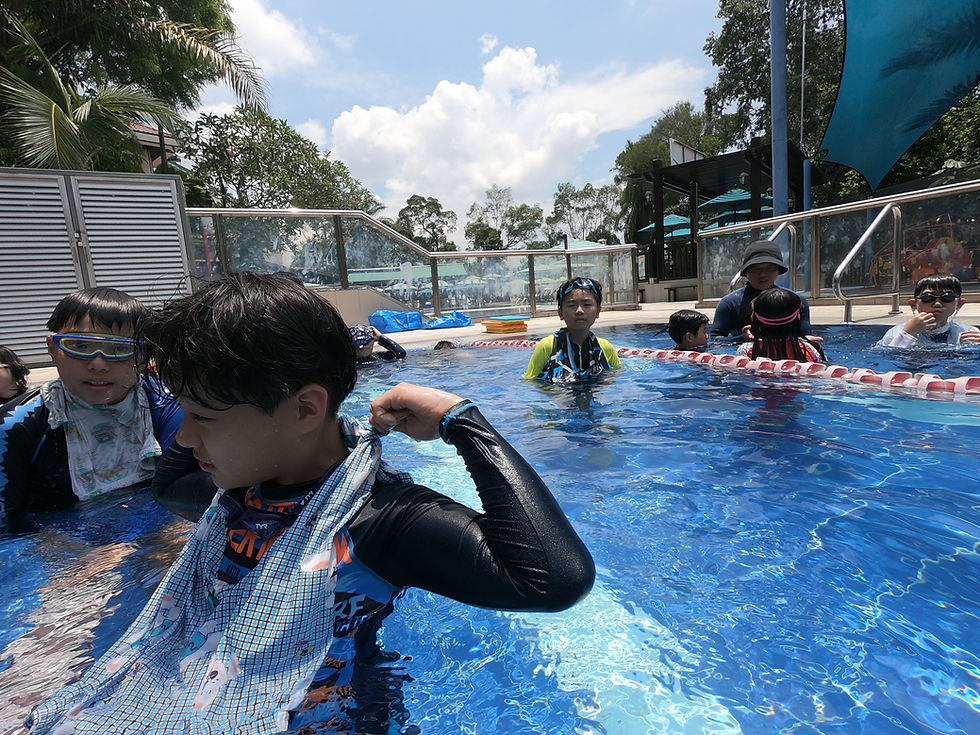How to Transition Breaststroke Skills from Pool to Open Water
- SG Sink Or Swim

- Aug 31, 2025
- 2 min read

Breaststroke is one of the most accessible and widely used strokes, especially among recreational swimmers and those beginning their open water journey. Its natural rhythm and head-above-water breathing make it a preferred stroke in challenging conditions. However, transitioning breaststroke from the pool to open water requires some important adaptations in technique, mindset, and training.
Whether you’re preparing for a triathlon, a charity swim, or simply exploring open water for leisure, this guide will help you translate your pool-based breaststroke skills into confident, efficient open water swimming.
🌊 Why Breaststroke Is Valuable in Open Water
Unlike freestyle, breaststroke allows swimmers to:
Maintain visibility above the surface for sighting and navigation.
Swim comfortably in waves or chop without inhaling water.
Conserve energy with its steady rhythm.
Stay calm and controlled, making it an excellent fallback stroke in long-distance swims.
These qualities make breaststroke an essential skill for open water safety and endurance.
🏊 Key Adjustments for Breaststroke in Open Water
1. Adapt Your Breathing
In the pool: Breathing is automatic with every stroke cycle.
In open water: Waves, chop, or cold shock can disrupt your breathing.
✅ Tip: Practice lifting your head slightly higher and timing breaths between wave crests.
2. Enhance Your Sighting Skills
Open water breaststroke gives you a natural advantage in sighting landmarks, buoys, or finish lines.
✅ Tip: During practice, incorporate sighting drills — look up every 4–6 strokes without disrupting rhythm.
3. Adjust Stroke Timing for Conditions
Calm water: Use long, gliding strokes for efficiency.
Choppy water: Shorten the glide to maintain forward momentum.
✅ Tip: Practice both variations so you can switch depending on conditions.
4. Train for Endurance
In open water, distances are often longer than typical pool sessions.
✅ Tip: Incorporate steady-state breaststroke sets of 500m–1,000m in the pool to build stamina before heading outside.
5. Prepare for Cold and Currents
Breaststroke is slower than freestyle, so you’ll spend longer in the water.
✅ Tip: Train in a wetsuit and practice in varied conditions to adapt to colder water and gentle currents.
🏋️ Pool Drills to Support the Transition
Pull Buoy Breaststroke Drill: Focus on arm mechanics without the kick.
Short Glide Drill: Practice reducing glide to simulate choppy conditions.
Sighting Breaststroke: Incorporate lifting your head to spot a target every few strokes.
Endurance Sets: Build up continuous swims to mimic open water distance.
🧠 Mental Preparation Matters
Open water can feel overwhelming, especially when visibility is low or conditions are rough. Breaststroke can help calm your mind by offering a familiar rhythm.
✅ Tip: Practice mindfulness breathing in sync with your strokes to reduce anxiety.
✅ Final Thoughts
Transitioning breaststroke from pool to open water is all about adaptability. While your pool technique provides the foundation, you’ll need to adjust stroke timing, sighting, and breathing to handle the dynamic conditions of open water. With consistent practice — both in the pool and outdoors — breaststroke becomes not only a useful stroke but also a powerful tool for endurance, navigation, and safety.





Comments